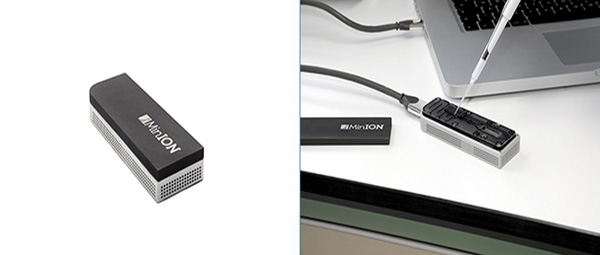MinION’s First Complete Genome Sequenced Using New Bioinformatics Tools

Oxford Nanopore’s first full genome of an organism using the lighter sized MinION genome sequencer without the aid of another sequencing machine.
Successful results of the first de novo experiment to sequence the entire genome of Escherchia Coli using Oxford Nanopore’s MinION sequencer were published in Nature Methods. The experiment was lead by Dr. Jared Simpson Principal Investigator at the Ontario Institute for Cancer Research. The team was aiming to provide a proof of concept to sequence an entire genome keeping in mind the high error rates of MinION.
The researchers specify tools and methods to overcome the high error rates in single reads that have been know to be a weakness of Oxford Nanopore’s USB sized devices. The researchers organised hackathons to find better ways to identify errors and stitch a complete genome.
The three step MinION sequencing process
- Detect overlaps between sequence reads match and correct errors using Multiple alignment
- Assemble genes Using Celera Assembler
- Refine Genome Using Probabilistic Model of DNA Electrical signals through the nano pore
While new uses are being devised each day for MinION, the device is still a couple of years away from being used in diagnostic clinics for personalised medicines and diagnosis. Apart from its high error rates, the software to make sense of the sequenced reads is missing. However, with the help of researchers like Simpson and Oxford Nanopore itself, the MinION will soon be a regular sight in clinics.
Reference: Nicholas J Loman, Joshua Quick, Jared T Simpson. A complete bacterial genome assembled de novo using only nanopore sequencing data. Nature Methods, 2015; DOI: 10.1038/nmeth.3444

